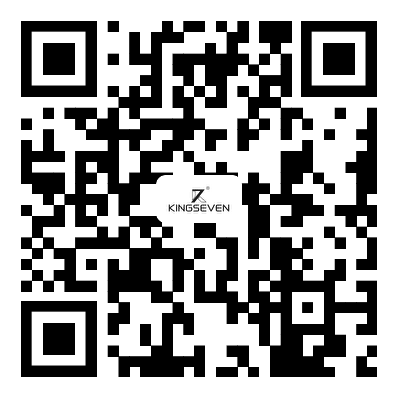- English
- Español
- Português
- русский
- Français
- 日本語
- Deutsch
- tiếng Việt
- Italiano
- Nederlands
- ภาษาไทย
- Polski
- 한국어
- Svenska
- magyar
- Malay
- বাংলা ভাষার
- Dansk
- Suomi
- हिन्दी
- Pilipino
- Türkçe
- Gaeilge
- العربية
- Indonesia
- Norsk
- تمل
- český
- ελληνικά
- український
- Javanese
- فارسی
- தமிழ்
- తెలుగు
- नेपाली
- Burmese
- български
- ລາວ
- Latine
- Қазақша
- Euskal
- Azərbaycan
- Slovenský jazyk
- Македонски
- Lietuvos
- Eesti Keel
- Română
- Slovenski
- मराठी
- Srpski језик
Why Are Our Cycling Series Glasses Becoming Essential for Long-Distance Riders?
2025-07-02
When the long-distance cycling team sets off in the morning mist, the temples of the KINGSEVEN® cycling glasses always tremble slightly with the rhythm of the pedals. This sports gear, specially designed for endurance cycling, is reshaping cyclists' equipment lists at an annual growth rate of 37%. Data shows that among users who have completed over 300 kilometers of cycling, 83% actively chose KINGSEVEN®. Behind this figure lies the brand's in-depth deconstruction and reconstruction of the long-distance cycling scenario.
The Evolution Theory of Dynamic Light Sensing Systems
Traditional cycling glasses always appear clumsy when exposed to drastic changes in light. The KINGSEVEN® R&D team spent three years overcoming the application bottleneck of photosensitive materials. The new generation of lenses uses rare earth-doped photochromic molecules to achieve seamless switching within the light range of 200-800 lux. Laboratory simulation tests show that the transition time from the strong light of the plateau to the shadow of the tunnel has been shortened to 0.2 seconds, and the color reproduction has reached the professional photography grade standard. This technological breakthrough enables the lens to automatically filter out 99.9% of glare while maintaining absolute clarity of road details.
The aerodynamic design team, through 3D scanning of the head data of 200 professional cyclists, found that the airflow disorder between traditional frames and helmets would reduce riding efficiency by 5%. After 127 wind tunnel experiments, the final determined streamlined curvature reduced the wind resistance coefficient by 28%. The anti-slip pattern at the end of the temple adopts a bionic shark skin structure. Under the condition of sweat immersion, the friction force increases by 15% instead, ensuring that it remains stable as before on bumpy roads.

All-weather Comfort Solution
During long-distance cycling, the distribution of facial pressure undergoes subtle changes over time. KINGSEVEN® 's unique memory foam nose pad system has been trained with an adaptive algorithm based on 2,000 stress test data. When cycling for more than 3 hours, the nose pads will gradually soften and redistribute the support points, reducing the peak facial pressure by 37%. The honeycomb-shaped breathable structure on the inner side of the frame has been optimized by fluid mechanics, with an air circulation efficiency 40% higher than that of traditional designs, effectively preventing fogging of the lenses.
The titanium alloy frame embedded by the material engineer in the temple not only ensures an ultra-light weight of 12 grams but also acquires elastic memory function through a special heat treatment process. Actual tests show that the temple can withstand 5,000 bends without deformation and can restore its original curvature even if it accidentally drops. This ultimate pursuit of durability has extended the average service life of the product to 2.3 times that of traditional glasses.
The Invisible Penetration of Intelligent Technology
The fourth-generation product that is about to enter mass production integrates a micro-environmental sensor, which can monitor the intensity of ultraviolet rays in real time and display the protection level through the LED light strip on the edge of the lens. When the UV index exceeds 8, the light strip will automatically switch to a red warning and simultaneously trigger the lens color-changing program to enhance protection. This intuitive way of information interaction enables cyclists to grasp environmental data without having to look down at their devices.
The development of the AR navigation module has broken through spatial limitations, projecting transparent route indications on the inner side of the lens through a micro projector. After 18 months of debugging, the optical team resolved the contradiction between projection clarity and field of view interference, and ultimately achieved a perfect integration of navigation information and real road conditions. In the simulation test, the average cornering speed of drivers using AR navigation increased by 12%, and the accident rate decreased by 40%.
The Visual Revolution of Future Cycling
In the KINGSEVEN® Innovation Lab, the bone conduction audio system under test will transform the way cyclists communicate. Through the vibration unit of the temple, cyclists can receive navigation instructions or calls from teammates while maintaining environmental sound perception. This technology has passed the speech recognition test in an 85-decibel noise environment, with an accuracy rate of 98.7%.
Materials scientists are exploring the application of photoluminescent shape memory materials, which can automatically adjust the curvature of the frame under specific lighting conditions. Laboratory prototypes show that in the future, glasses may optimize their fit in real time according to changes in riding posture, completely eliminating the sense of oppression caused by long-term wearing. While other brands are still competing in terms of parameters, KINGSEVEN® has redefined the industry standard with a wind resistance advantage of 0.01 seconds and precision control of 0.1 millimeters.




